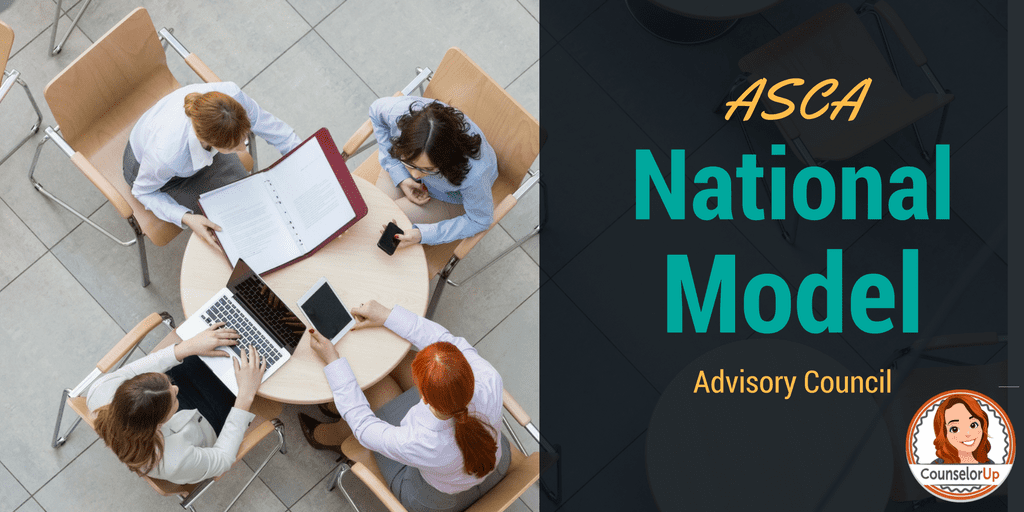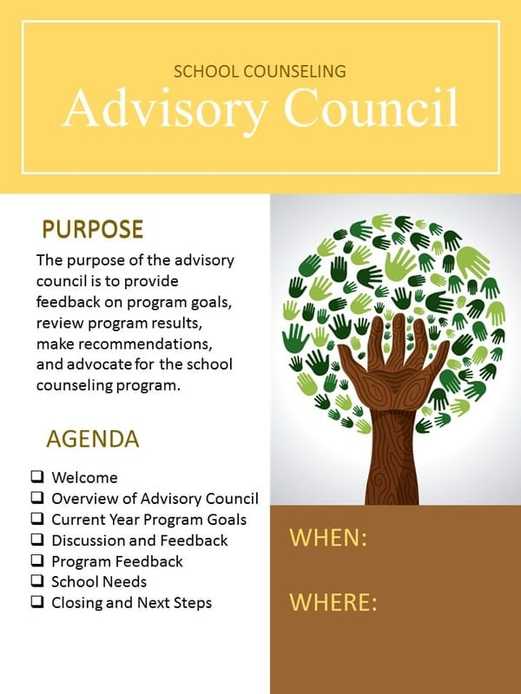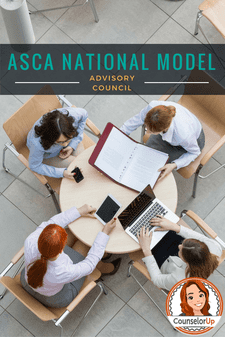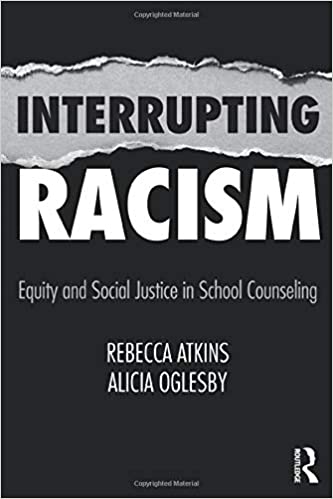Video Transcript
The first step to a successful advisory council is to invite representatives who will give constructive, helpful feedback and will be assets to your team. The advisory council should have representatives from all stakeholders groups: parents, teachers, administrators, community members, and even students. Make a list of one or two people in each category that might be willing to serve on your team. Review the list to ensure a representation of diversity that matches the school.
Once you have your desired members of your advisory council, invite your members to join. You might send an email explaining the purpose of the council, make phone calls (especially to parents and community members), or send actual invitations. To help, I’ve created an editable one page document explaining the advisory council that you can share with your prospective members. It’s helpful to be upfront about the time commitment that members are making. I have found that twice per year is not overwhelming for most people and I usually sweeten the deal by providing snacks! Each meeting should have an agenda distributed beforehand (maybe along with a meeting reminder) and minutes. Let’s explore some example minutes for fall and spring meetings. In our first example, Happy High, the advisory council has not met consistently for the last few years. Because of this, there are many new members to the team and the school counselors felt that a brief orientation was necessary. After welcome and introductions, the school counselors spent time explaining what a comprehensive school counseling program is and how the advisory council supports a comprehensive program.
After the purpose of the meeting was established, the counselors presented the current year Program Goals. This presentation included their curriculum plan, group plan, and their closing the gap plans in easy to understand language so that all present (even those who are not educators) can give feedback and discuss. Because the advisory council was new, the counselors wanted to list discussion and feedback as its own agenda item to encourage participation. Finally, the counseling team asked for general school counseling program feedback and the overall needs of Happy High. It’s often helpful to come prepared with a few questions to stimulate conversation. For instance, the Happy High counselors had instituted individual meetings for all freshmen in the first quarter. The counselors wanted to hear feedback from the stakeholders about the efficacy of this practice and how to improve in the future. The counselors closed the first meeting by listing the next steps for all those involved and setting a general date for the Spring meeting.
In our second example, Magic Middle, the school has had an effective advisory council for a few years and there has been very little turnover on the team. Because of this, their fall meeting can jump right into its work with less time spent on informational pieces. In this meeting, the school counselors began with welcome and introductions and then moved straight into a reflection on the previous year. They shared the data and gave a recap of the goal achievement. They were then able to spend a larger chunk of time sharing the current year’s program goals and facilitating a discussion for feedback. Once an advisory council is established, there is typically time to include some components that may not relate directly to your program goals. At Magic Middle, the counselors wanted to let the council know about some changes in registration procedures from the district and to gather feedback on a new Mix It Up Day project being planned by their school counseling intern. As always, the team ended with a closing and next steps.
Now let’s look at spring meetings. At Excellent Elementary, the school counselor knew that scheduling the meeting too close to the end of the year would be inconvenient for the advisory council members. Because of this, he scheduled their meeting in May about a month before the end of the school year. After welcome and introductions, the school counselor gave updates on program goals. Final data was not yet available, so he shared the data that he had. In this example, the counselor had perception data following an academic achievement group but did not yet have end of the year testing results.
As we all know, the best laid plans often go awry once the year is underway. The school counselor at Excellent Elementary took this time to discuss challenges of the year. This might be challenges in achieving program goals or other unique challenges. In this school year, Excellent Elementary had several crises that effected the staff and students. The school counselor wanted to discuss the crisis response with the advisory council to gain feedback for improvement. To close the meeting, the school counselor discussed some plans and ideas he had for the next year and asked others to brainstorm as well. As a closing, he presented each member with a certificate and a sincere thank you for their support.
One important aspect of advisory councils that may be overlooked is the varying levels of experience with data and education by the members of your team. Because the council incorporates members from the community, parents, and possibly students, an extra effort needs to be made to make the presentation of data, the discussion, and the feedback needed accessible to all. This is an actual example of program goals and results shared in a way that is accessible to all stake holders. In this format, the counselor shared their goal, explained what they did, and shared the results. In the first example, we see that the goal was: 60% of students who scored a 2 on the EOG last year will score a level 3 or higher this year. We can tell what the counselor did in order to reach this goal: Counselor and intern met with students in 4th-5th grade who scored a high 2 on last year’s EOG but did not pass. Counselors reviewed study skills, test taking strategies, and stress management. 3rd graders also received this intervention based on teacher referral. We can see the results of the intervention: 69% of students in the group passed the EOG in the area they did not pass in previous year. The counselor also shares their perception data: Students rated the group in a range of 5.6-6.0 on a scale of 6 in helping them with goal setting, learning study tips and whether they would recommend this group to other students. This goal is easy to understand, and the data is pretty straight forward. I think that all members of the advisory council could participate in discussion of this goal. In the second example, we see that the goal was: 80% of students who had 15+ absences last year will have 9 or fewer absences this year. We can see that the counselor and intern met with students in 4-5 grade who had more than 15 absences last year. They learned about resiliency: goal setting, healthy habits, and positive outlook. The results were also positive: 64% of students who participated in the group had 9 or fewer absences. 93% of students had a decrease in absences. Those who participated in the group had 252 absences last year and only 152 this year. However, in this goal, the results are a bit harder to read overall because it lists several data points. The information might be better shared through a graph. This doesn’t have to be hard. I created this graph through a free website linked in the show notes. For the next piece of data, a bar graph also works well and you can add the most important piece of information “100 more instructional days in attendance” to the slide as you share.
During each advisory council meeting, make sure to take minutes that include the actual feedback from council members. Other stakeholders who read the minutes should be able to see a snapshot of the discussion that took place. Consider putting minutes on your school counseling program website or sharing with your school leadership team. Lastly, it’s important to keep copies of all documents, PowerPoints, agendas, and minutes for all meetings. Member attendance should be documented in your minutes or on a sign-in sheet. The advisory council is a great opportunity for school counselors to share what they do, obtain feedback from stakeholders, and to support advocacy of their program. Whether removing extra duties, asking for financial support from the PTA or community or providing volunteer support for your programming, the advisory council is your number one tool for gaining support of your program.











